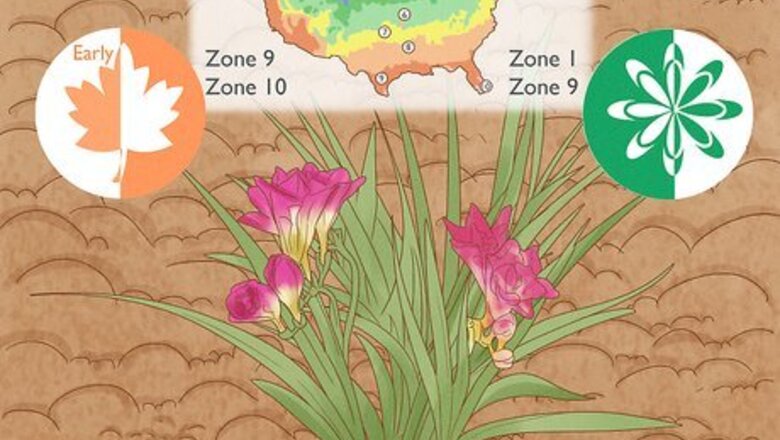
views
Planting Freesias
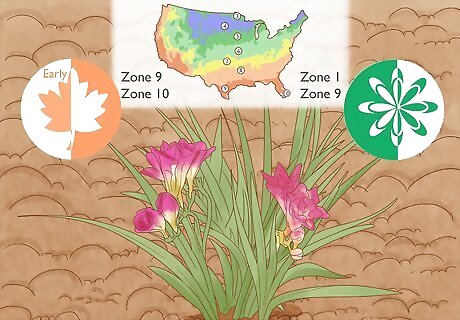
Find out when to plant your freesias. Freesias grow from bulbs that must be planted at a particular time of year to thrive. The season when you plant your freesias depends on what growing zone you live in. Check out a growing zone finder to determine when to plant freesias in your particular region. Freesias are hardy in growing zones 9 and 10, meaning they'll survive the winter in these warmer areas. If you live in one of these zones, you should plan to plant your freesia bulbs in the early fall to give them time to sprout roots and get established. If you live in a cooler growing zone, such as zones 1-9, the freesias will die over the winter if you plant them in the fall. It's best to wait until spring, just after the last chance of frost has passed. That way the fragile buds will grow and thrive.
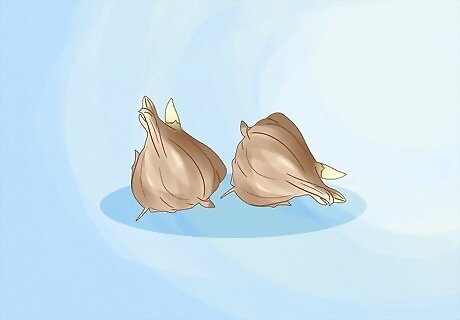
Select bulbs that are large and firm. Freesia bulbs, also called corms, look similar to green onions. Buy them from a nursery the same day or just a few days before you plan to put them in the ground. If you live in a cooler growing zone, wait until spring to purchase your freesia bulbs. Purchase bulbs that have been prepared by going through a dormancy period and that are now ready to grow. Talk to your local flower store or nursery to help you find the right bulbs.
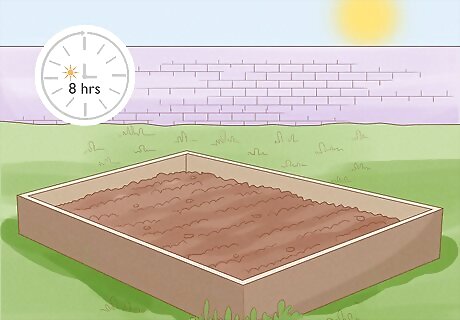
Prepare a planting bed. Choose a spot that gets full sun. Freesias won't bloom if they're planted in the shade. They need full sun to thrive and have a long blooming season. Choose a planting spot that gets full sun for at least eight hours every day. The soil should be relatively fertile, but it's not usually necessary to amend the soil to change its pH. That said, freesias do need soil that drains well. They need a lot of water, and if it sits around their bulbs and roots it will cause them to rot. When you have a spot picked out, check to see how it drains by digging a hole and filling it with water. If the water stands in the hole and drains very slowly, you'll need to choose another spot or add material to the soil to help it drain better. If you've chosen a planting spot that doesn't drain well, till the soil to a depth of 12 inches and work in compost, peat, or other organic matter to raise the soil by three inches.

Plant the bulbs. Dig holes one to two inches deep, three to four inches apart. Place the freesia bulbs in the holes with the pointed ends up. Cover the bulbs with soil and pat it gently, then water the planting bed thoroughly. The sprouts will emerge in two to three weeks.
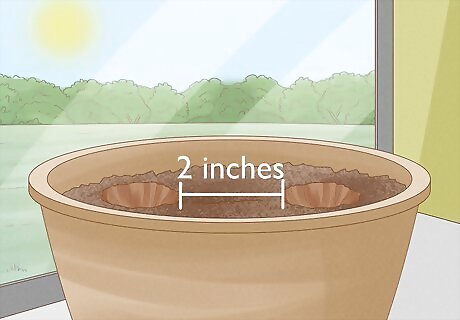
Consider pot planting. If you'd like to plant freesias in a pot, choose a pot with adequate draining holes and fill it with a standard potting mix. Plant the bulbs two inches apart and two inches deep. Keep the container indoors after planting, and move it into full sun once the plants begin to sprout.
Caring for Freesias
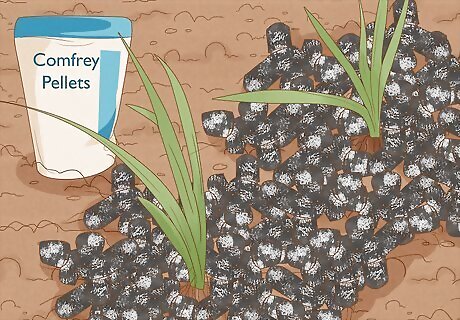
Fertilize the sprouts. When you see the first sprouts emerge, you can help them get off to a good start by feeding them a potash-rich fertilizer, such as comfrey pellets. Scatter the pellets near the base of the sprouts and gently press them into the soil. This step isn't strictly necessary, but it can be helpful if the soil where you live isn't very rich.

Stake the plants when they begin to grow tall. When they reach a height of six to eight inches, freesias need support so they don't fall over. Provide small stakes next to each plant, and gently lean the freesias against them. Check the stakes from time to time to ensure they're providing enough support. If you have a large bed of freesias, you can support them by suspending a plastic mesh 1-2 feet (50 to 75 cm) above the ground. Place stakes on the corners of the bed, and attach the mesh at the corners. The plants will grow up the mesh.
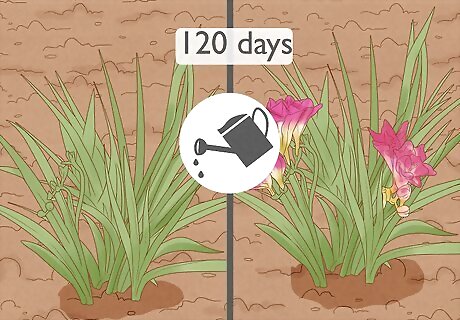
Water the freesias throughout the growing season. Since the freesias are planted in full sun, their soil will dry out quickly. Keep it damp, but not soggy throughout the growing season. After about 120 days, the freesias will bloom. Continue watering them well until the blooms begin to fade, at which point you can taper off the watering until they die and fall off. Water freesias in the morning, so the planting bed has time to dry out before nightfall. If water sits around the plants all night, mold could begin to grow. Water around the base of freesias, rather than spraying it over the leaves and blooms, so that the plants don't get cooked in strong sun.

Wait until the foliage is yellow to remove it. Once the flowers have gone, let the leaves continue to grow. Wait until they're yellow before removing them. They continue providing energy to the plant until they die. The stored energy will help your freesias come back strong the following year. After the first frost, "lift" the freesias by cutting back the leaves and stems to one inch above the ground. This step isn't necessary if you live in a hot growing region and the freesia's leaves never yellow and die.
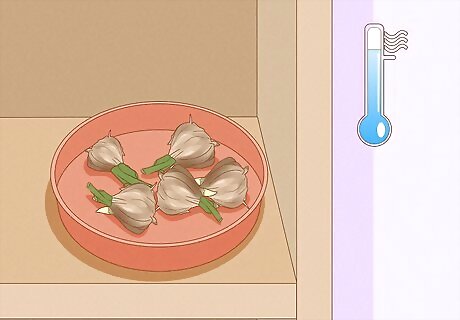
Dry the bulbs or let them rest. If you don't live in growing zones 9 or 10, you'll need to dig up the bulbs and let them dry out over the winter, then replant them again in the spring. If you don't protect them from the cold, the bulbs won't survive the winter. Dig up the bulbs and place them in a cool, dry space for the winter, then plant them after the last frost has gone. In the warmer climates of growing zones 9 and 10, you can leave the bulbs in the ground. They'll come up again in the spring, having survived the winter.
Cutting Freesias
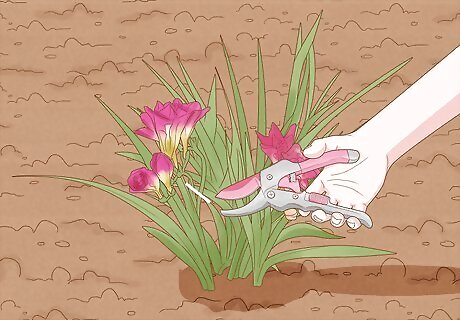
Cut freesias at the height of their bloom. Freesia plants will continue to thrive after cutting, so there's no harm done if you want to bring some inside to enjoy in your home. Use a clean pair of pruning shears or a sharp knife and make a diagonal cut toward the base of the stem, leaving a few inches of stem intact. Don't use scissors to cut freesias, since they pinch the stem instead of making a clean cut. A clean cut will ensure the cut freesias last a long time, and it does less damage to the plant. Potted freesias may also be cut. Avoid bringing the entire pot inside, though, since freesias will die without adequate sunlight.
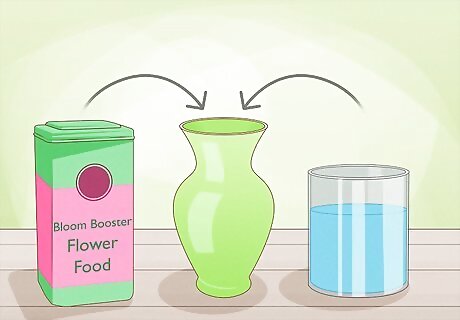
Provide clean water and flower food. Freesias can last up to three weeks indoors if you feed them flower food. Fill a vase with clean water and empty a packet of flower food from the nursery inside. Alternatively, you can add a teaspoon of sugar syrup to provide food for the flowers. Add more food each time you change the water, which should be done every few days.
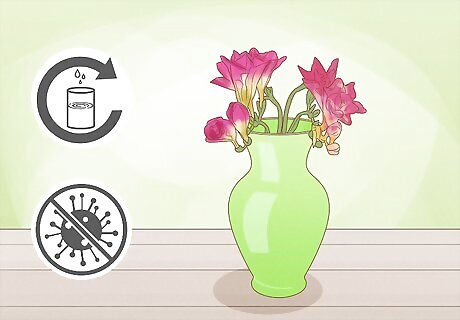
Keep the vase bacteria-free. Another way to ensure your flowers last a long time is to use a very clean vase with no residue from previous bouquets. Any little bit of bacteria can cause the flowers to rot more quickly. In addition to using a clean vase and changing the water every few days, try adding a teaspoon of bleach to the water when you change it. The bleach kills bacteria and keeps the flowers perky far longer than when you don't use it.











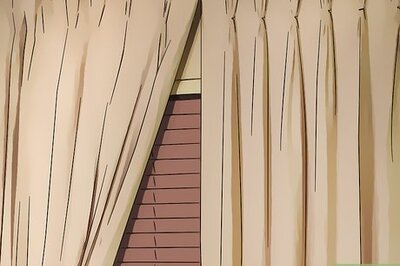








Comments
0 comment